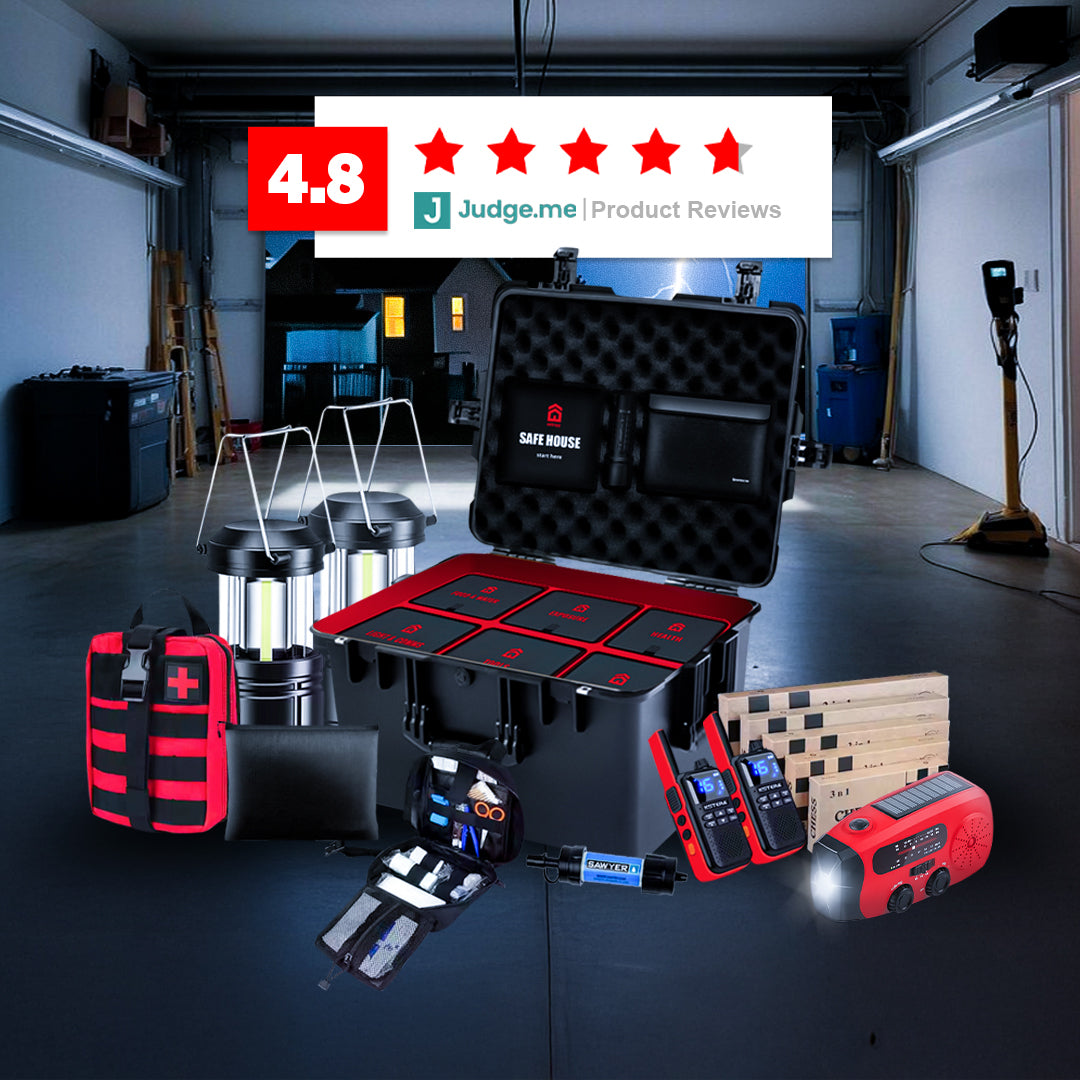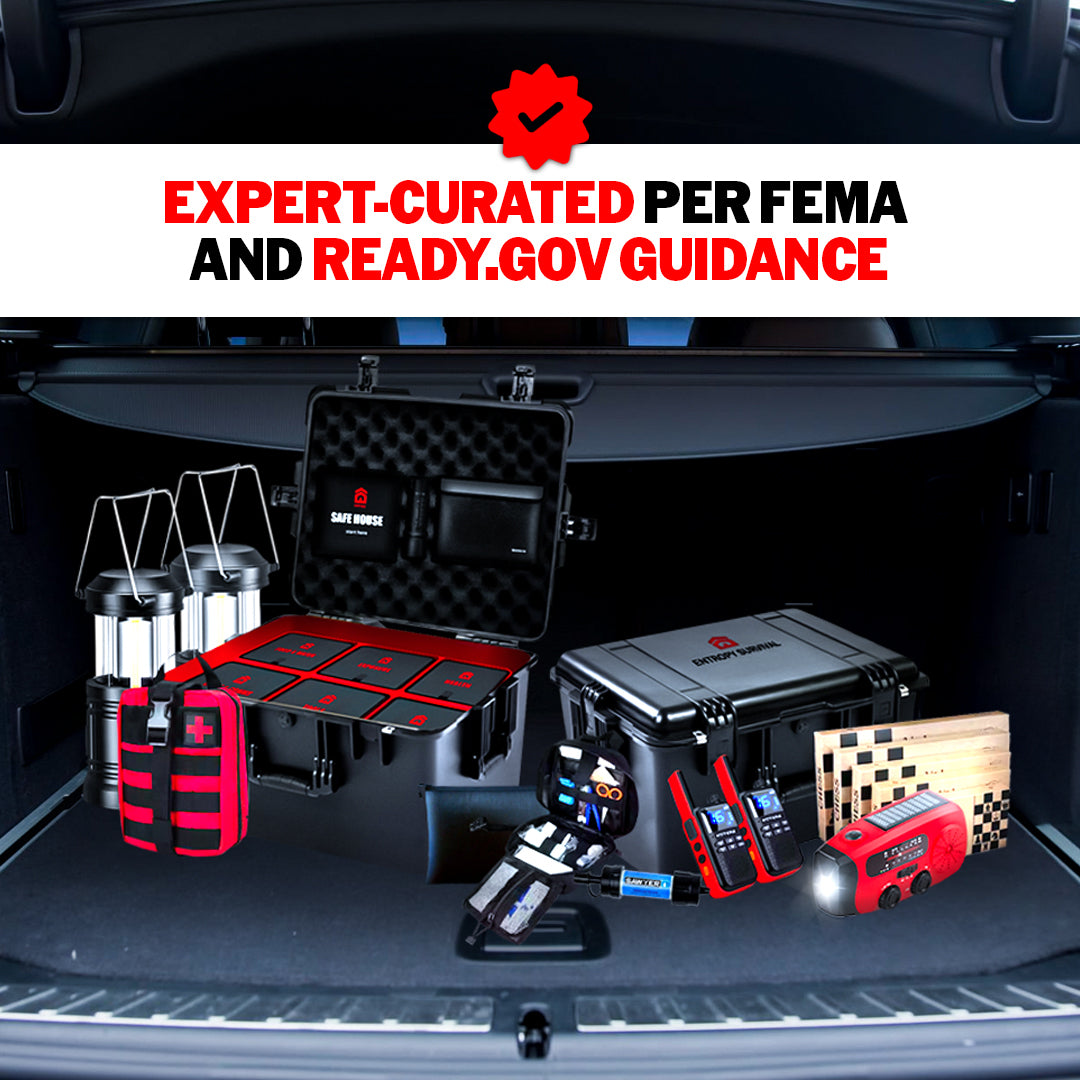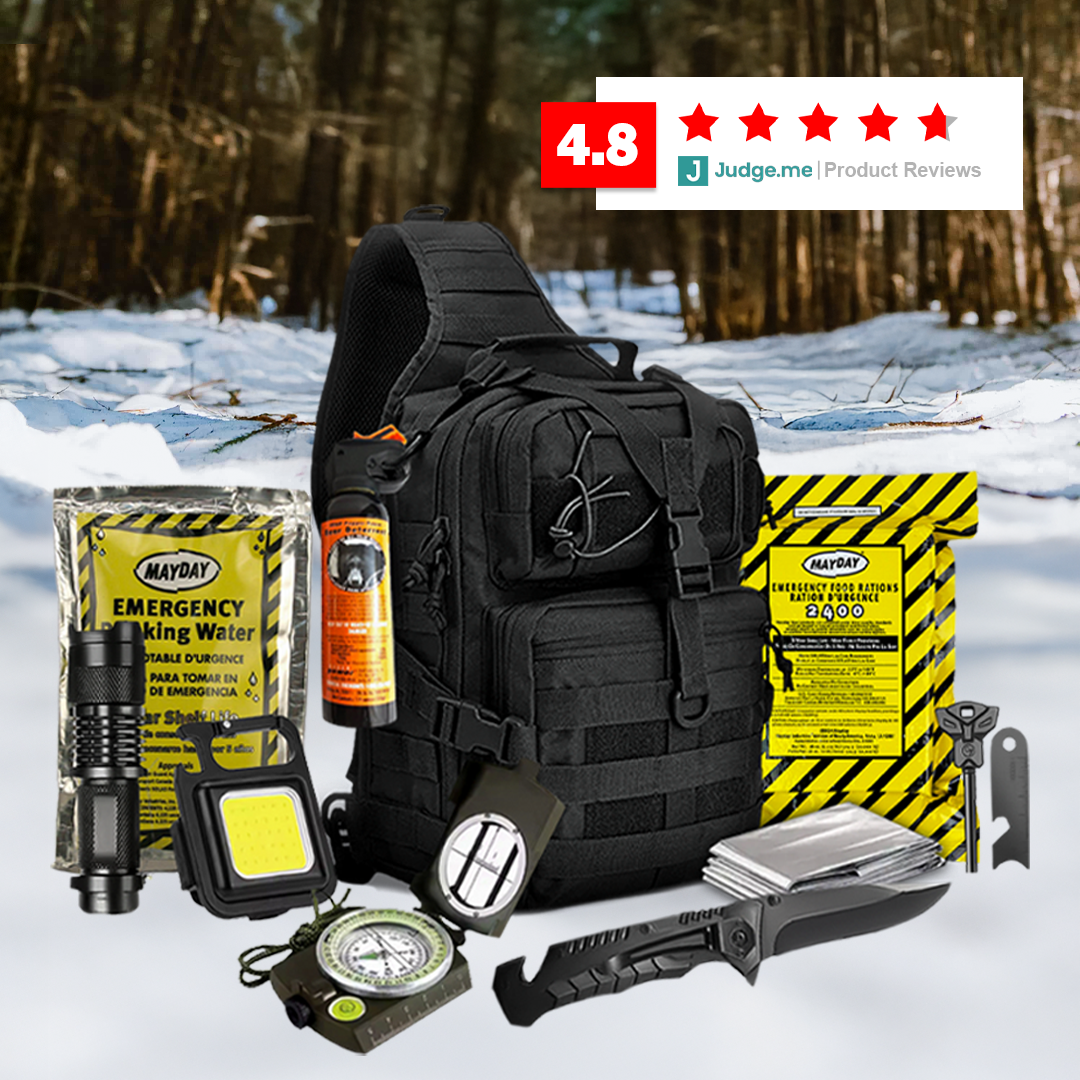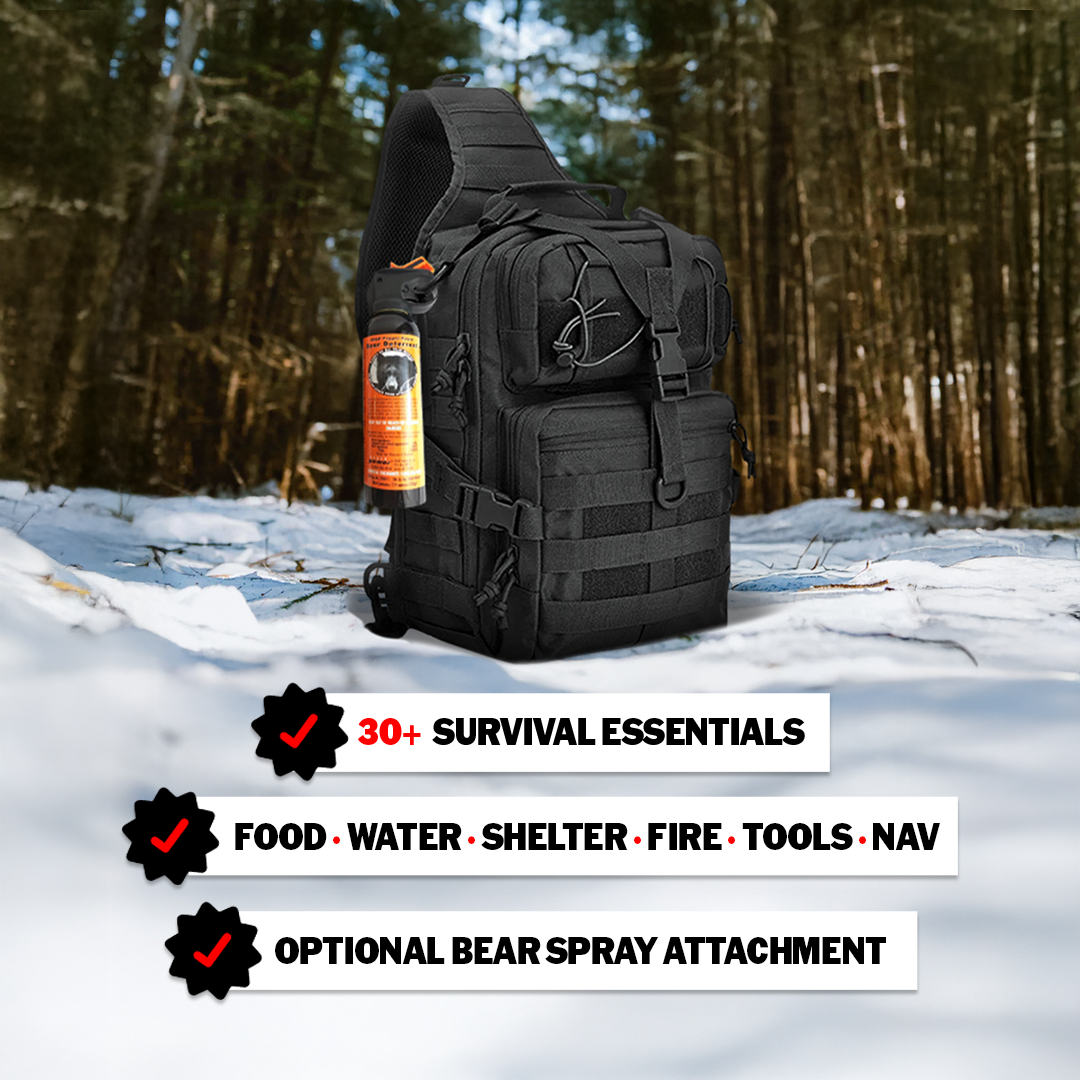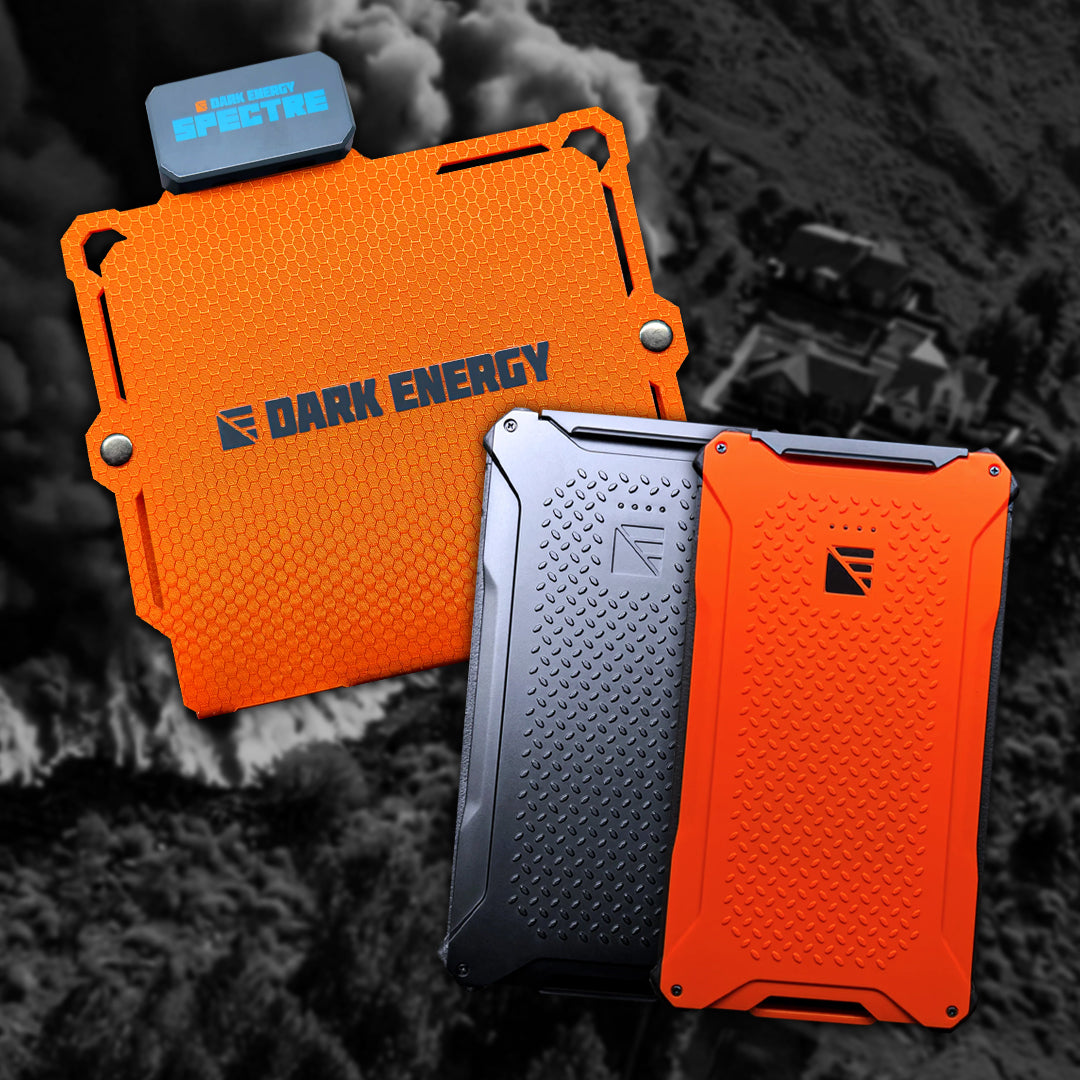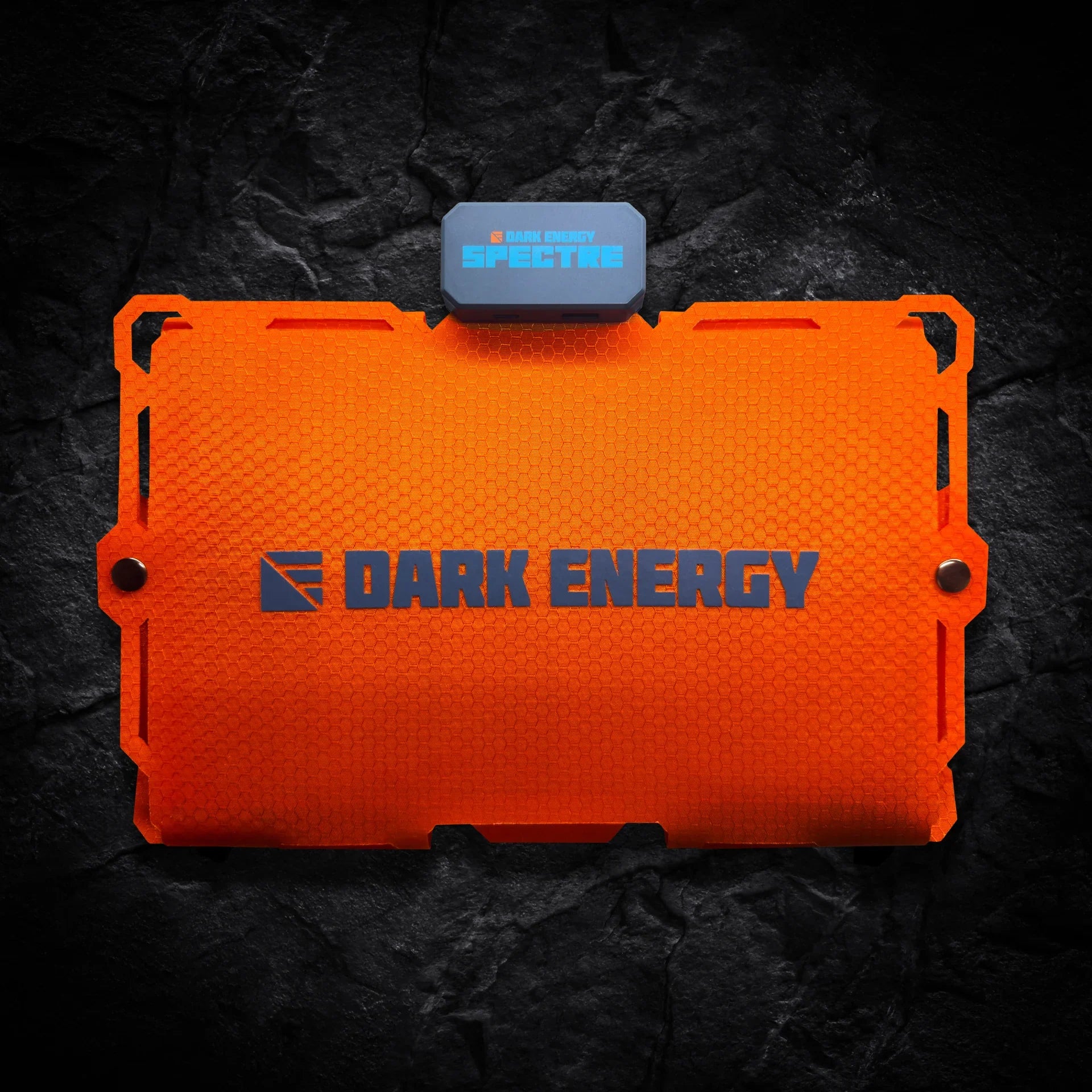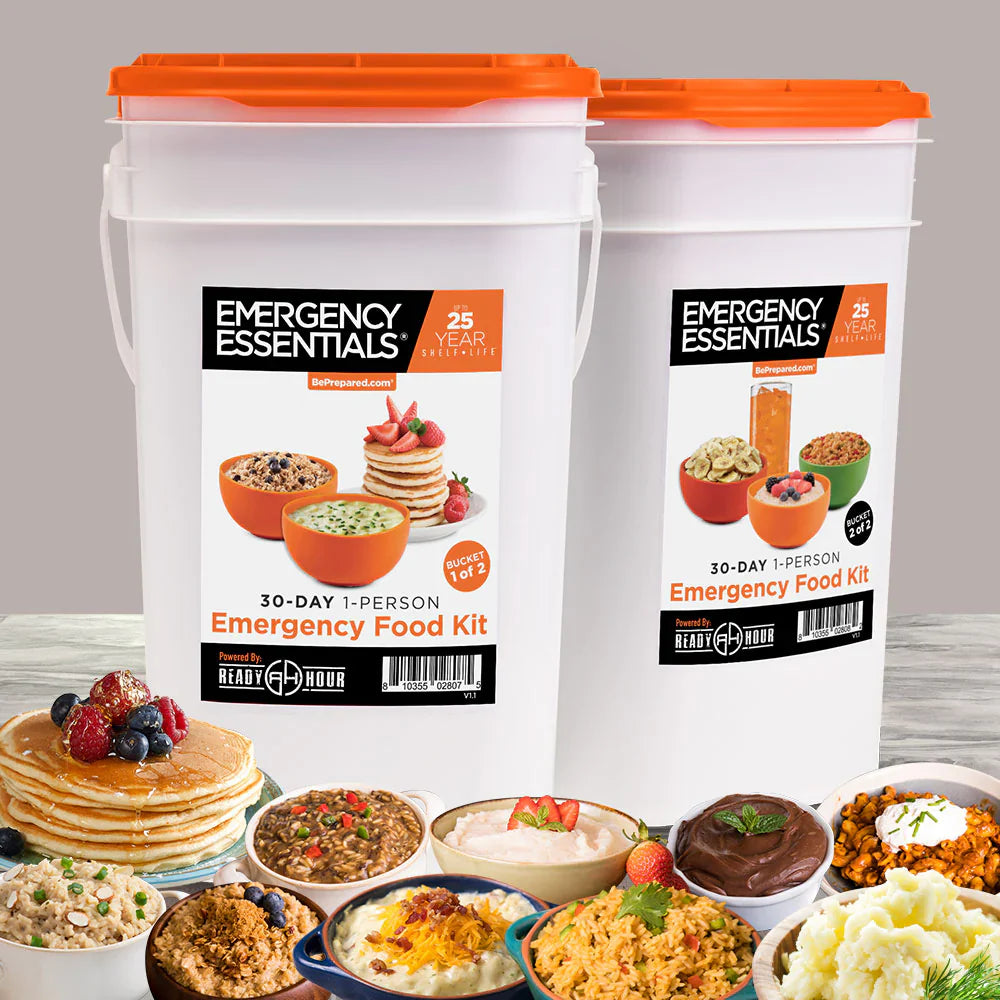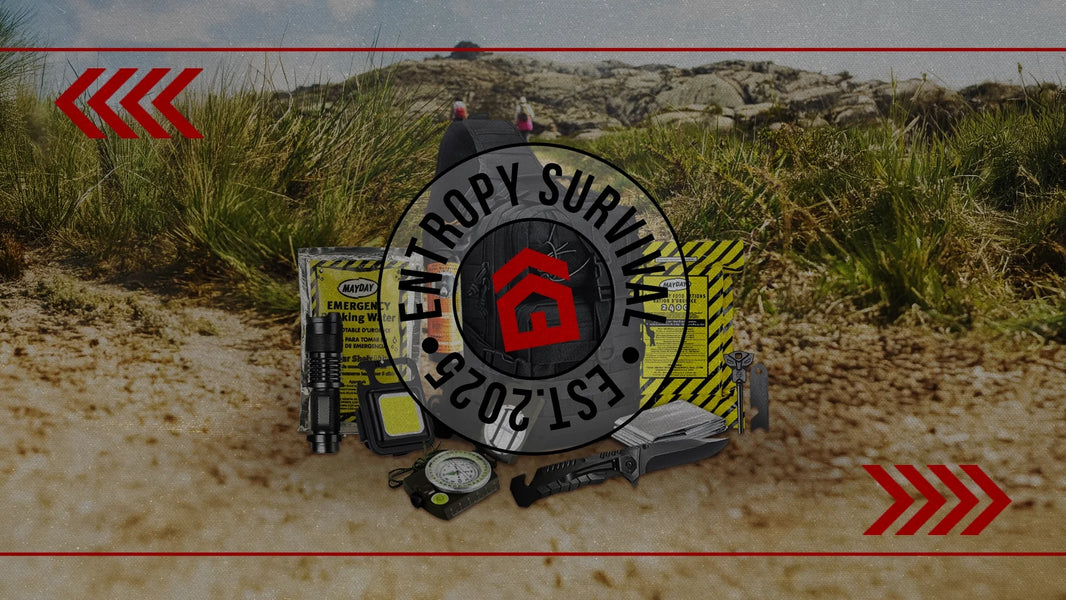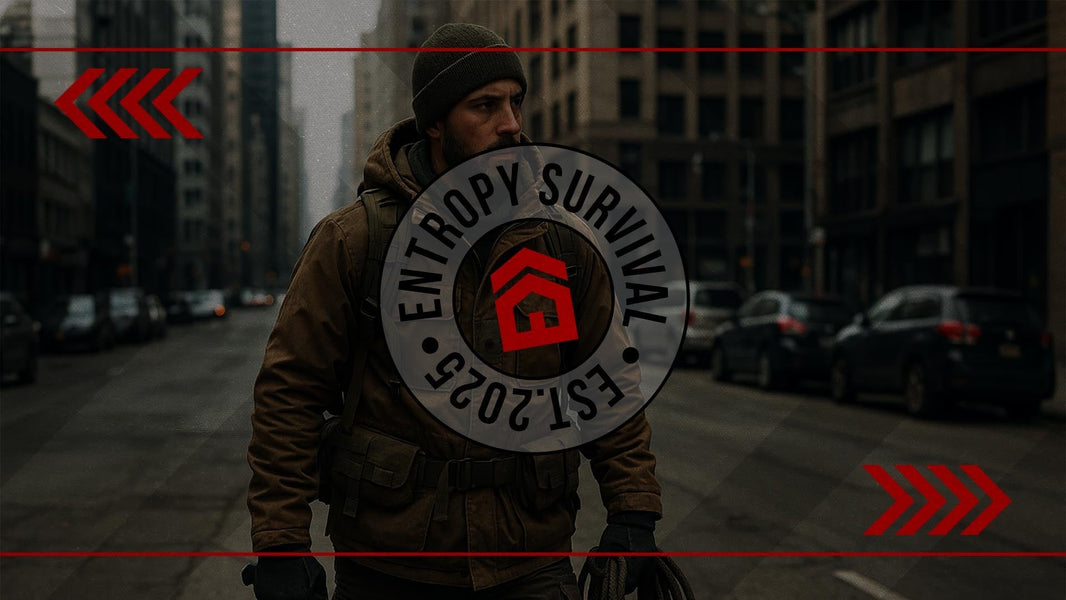Creating Resilient, Independent Energy Solutions for Your Homestead
When establishing a truly self-sufficient homestead, few systems are as critical as your power and lighting infrastructure. At Entropy Survival, we've helped countless families develop resilient energy solutions that provide independence from fragile public utilities while ensuring essential capabilities during both everyday life and emergency situations. This comprehensive guide combines our field-tested expertise with practical approaches to homestead power that align with our overarching emergency preparedness philosophy.
Understanding Your Homestead Power Needs
Before diving into specific power solutions, taking stock of your actual energy requirements creates the foundation for an efficient and effective system. Many first-time homesteaders make the critical mistake of either drastically underestimating their power needs or overbuilding systems that exceed their budget and maintenance capabilities.
Start by conducting a thorough energy audit of your expected or current consumption. This process involves listing every device, appliance, and system that will require electricity, along with its power requirements (typically measured in watts) and estimated daily usage time. From essential refrigeration to water pumps, lighting, communications equipment, and security systems, cataloging these needs provides clarity about your actual requirements.
At Entropy Survival, our assessment process divides energy needs into three tiers: critical survival functions, important quality-of-life systems, and convenience applications. This tiered approach allows for strategic power allocation during different scenarios, ensuring that limited resources flow to your most essential systems first.
Critical functions typically include refrigeration for food and medications, minimal lighting, water pumps, communication devices, and medical equipment. The important tier might include heating systems, additional lighting, cooking appliances, and security equipment. The convenience category encompasses everything else, from entertainment devices to power tools and non-essential appliances.
Our field experience has shown that a properly designed homestead power system can supply all three tiers during normal operations while maintaining the capability to power critical and important systems during resource limitations or emergencies. This balanced approach aligns with our Bug Out philosophy of practical, sustainable preparedness.
Primary Power Generation Options for Homesteads
Homestead power generation typically revolves around several core technologies, each with distinct advantages and limitations. Understanding these options allows you to build a layered, redundant system appropriate for your specific location, budget, and needs.
Solar Power: The Homestead Foundation
Solar photovoltaic (PV) systems have become the cornerstone of most homestead power setups for good reason. Modern solar technology offers remarkable reliability, minimal maintenance requirements, silent operation, and zero fuel needs. These attributes align perfectly with our preparedness principles at Entropy Survival, where we emphasize systems that continue functioning regardless of external supply chains.
A basic solar setup includes PV panels, charge controllers to regulate power flow, batteries for storage, and inverters to convert DC power to the AC power used by most appliances. When properly sized and installed, this system can provide decades of consistent power generation with minimal intervention.
The location of your homestead significantly impacts solar viability. Southern exposure, minimal shading, and regional weather patterns all factor into potential output. During our homestead assessments, we typically calculate between 4-7 hours of effective daily production, depending on geographic location and seasonal variations.
One misconception we frequently encounter involves cold weather performance. Many homesteaders are surprised to learn that solar panels actually operate more efficiently in cooler temperatures, provided they receive adequate sunlight. Snow coverage presents challenges, but proper panel placement and occasional clearing maintain production even in northern climates.
For most medium-sized homesteads supporting a family of four, we typically recommend starting with a
solar array, expandable according to future needs and budget. This size generally powers critical and important systems while providing surplus during optimal conditions for convenience applications or battery charging.
3-5 \mathrm{~kW}
Wind Power: Complementary Energy Production
While solar power often forms the foundation of homestead energy systems, wind generation offers excellent complementary capabilities. Wind turbines generate power during conditions when solar production may be limited, including nighttime and overcast periods, creating natural system redundancy.
Smaller homestead-scale wind turbines typically range from
in capacity, with
units being most common for supplementary systems. Effectiveness depends heavily on consistent wind patterns, with most turbines requiring average wind speeds of at least 8-12 mph to generate meaningful power.
1-10 \mathrm{~kW}
1-3 \mathrm{~kW}
Height becomes critical for effective wind harvesting, as ground-level obstacles significantly reduce wind speed and create turbulence. Most residential turbines require mounting at least 30 feet above any surrounding obstruction within a 500-foot radius, with optimal installation typically
feet high.
60+
At Entropy Survival, our testing has repeatedly confirmed that hybrid solar-wind systems outperform either technology independently. This redundancy perfectly exemplifies our core philosophy of layered preparedness, ensuring that fluctuations in environmental conditions don’t compromise your energy independence.
The primary drawbacks of wind systems include higher maintenance requirements, mechanical complexity, and potential noise issues. Properly installed modern turbines have mitigated many historical problems, but they still require more regular attention than solar systems. If considering wind power, we recommend allocating resources for annual professional inspections and maintenance.
Hydropower: The Consistent Producer
For homesteaders blessed with year-round flowing water, micro-hydropower systems offer unmatched reliability and consistency. Even modest streams can generate substantial electricity when properly harnessed, often producing power 24/7 regardless of weather conditions or time of day.
The key factors for viable hydropower include head (vertical drop of water) and flow rate. Systems can be designed for high-head/low-flow scenarios (typical of mountainous regions) or low-head/high-flow situations (common in flatter areas with larger streams). Even elevation changes of just a few feet can generate usable power with sufficient water flow.
Unlike solar or wind options, hydropower systems typically require more complex permitting and environmental consideration, as they interact directly with watersheds. Many jurisdictions regulate water usage and require specific approvals for systems that divert or utilize natural water flows.
From our field experience helping homesteaders develop micro-hydro systems, we’ve found that even modest setups producing 1-2 kW continuously often outperform much larger solar or wind installations in terms of total energy production. The consistency of hydropower makes it particularly valuable for powering critical systems and charging battery banks.
Generators: Essential Backup Power
While renewable energy sources form the backbone of sustainable homestead power, conventional generators remain an essential component of any complete system. At Entropy Survival, we view quality generators not as primary power sources but as crucial backup systems that provide power security during extended adverse conditions or maintenance periods.
Fuel considerations significantly impact generator selection. Diesel generators typically offer the best fuel efficiency and longevity for larger systems, while gasoline models provide broader fuel availability during emergencies. Propane and natural gas generators present compelling alternatives with excellent shelf stability and cleaner operation, though with somewhat lower energy density.
Our recommended approach involves sizing generators to handle your critical and important loads simultaneously, rather than attempting to power every convenience system. This typically translates to 5-10 kW for most family homesteads, though specific requirements vary based on your unique situation and equipment.
Important features to consider include electric start with manual backup, automatic transfer switches for integration with renewable systems, low-oil shutoff protection, and weather-resistant housing for outdoor placement. The quieter operation of inverter generators makes them particularly valuable for security considerations, though they typically cost more than conventional models.
The Entropy Survival Safe House Kit includes portable power stations that serve as miniature generators for essential electronics and communications equipment. These compact units provide crucial backup capability when main systems are unavailable, perfectly aligning with our philosophy of layered redundancy.
Battery Storage: The Critical Component
No homestead power system functions effectively without proper energy storage. Battery banks serve as the linchpin of independent energy systems, storing surplus production for use during low-generation periods and providing stable power delivery despite fluctuating inputs.
Several battery technologies dominate the homestead market, each with distinct advantages. Traditional lead-acid batteries remain the most affordable option with widespread availability, though they require regular maintenance and offer shorter lifespans. Absorbed Glass Mat (AGM) variants provide maintenance-free operation with improved durability at moderately higher costs.
Lithium-based batteries have revolutionized homestead power systems with their exceptional efficiency, depth-of-discharge capabilities, and longevity. Despite higher upfront costs, their total cost of ownership often proves lower over the system lifespan due to their significantly longer cycle life and reduced maintenance requirements.
For critical applications, we typically recommend lithium iron phosphate (LiFePO4) batteries for their optimal balance of safety, lifespan, and performance. These batteries can withstand thousands of deep discharge cycles while maintaining excellent capacity, making them ideal for serious self-sufficiency applications despite their premium price point.
Proper battery sizing involves calculating both capacity needs and discharge limitations. Most systems should provide 2-3 days of autonomy for critical systems during zero-production periods. For lead-acid systems, this calculation must account for the 50% maximum recommended discharge depth, effectively doubling the required battery capacity compared to lithium systems that safely handle 80-90% discharge.
The modular nature of battery systems allows for strategic expansion over time. At Entropy Survival, we often recommend starting with a moderate bank that handles critical needs, then expanding as budget permits to support additional systems and increase autonomy periods.
Practical Homestead Lighting Solutions
While power generation focuses on watts and kilowatts, effective lighting design dramatically impacts both functionality and efficiency. Thoughtful lighting systems enhance security, extend productive hours, and create comfortable living spaces while minimizing energy consumption.
LED Technology: The Efficiency Standard
Modern LED lighting has transformed homestead illumination options. With energy efficiency up to 90% better than incandescent bulbs and lifespans measured in decades rather than months, quality LEDs represent the only sensible choice for self-sufficient lighting systems.
Beyond basic efficiency, LED systems offer unprecedented flexibility. Color temperature options range from warm, cozy ambient lighting to bright task illumination that mimics daylight. Dimmable fixtures provide precise control over light levels, and specialized grow lights support indoor food production during winter months.
Our testing has identified several key considerations for homestead LED selection. Higher Color Rendering Index (CRI) values produce more natural-looking light, improving visual comfort during extended use. For critical work areas, higher lumens-per-watt efficiency maximizes illumination while minimizing power consumption. Sealed, weather-resistant fixtures ensure longevity in the variable conditions common to homestead environments.
The Entropy Survival approach to lighting mimics our three-tiered power system design. Critical pathway and security lighting receives top priority, task and food preparation areas form the second tier, and ambient comfort lighting completes the system. This prioritization ensures that limited power resources flow to the most essential illumination needs first.
DC vs. AC Lighting Considerations
One often-overlooked aspect of efficient homestead lighting involves direct DC power utilization. Since solar panels and batteries produce DC power, running DC lighting circuits eliminates the conversion losses associated with inverters (typically 10-15%). For critical lighting systems, direct DC wiring provides superior efficiency and reliability by removing the inverter as a potential point of failure.
Modern 12V and 24V DC lighting systems offer excellent quality and variety, though with somewhat fewer options than standard AC fixtures. The trade-off between selection and efficiency often favors 12V systems for critical pathways and security applications, with AC lighting for general household use.
At Entropy Survival, our recommended approach creates redundancy through parallel systems. Critical lighting runs on direct DC power with manual switches accessible at entrances and central locations. General illumination typically utilizes normal AC power through inverters, with selected fixtures connected to automatic transfer switches that default to essential DC circuits during power limitations.
Outdoor Lighting for Security and Function
Effective outdoor lighting balances security needs with practical function and energy efficiency. Motion-activated fixtures provide security benefits without continuous power consumption, alerting to movement while conserving energy. Strategically placed, these systems create awareness of potential concerns while maintaining the dark environments that support restful sleep patterns.
Low-voltage pathway lighting improves safety during nighttime navigation without excessive power demands. Solar-powered options with integrated batteries offer standalone operation, though we typically recommend hardwired systems with central battery backup for critical areas to ensure functionality during extended adverse weather.
For outdoor work areas, higher-output directional lighting mounted at appropriate heights provides task illumination without excessive light pollution. By focusing light precisely where needed, these systems maximize usefulness while minimizing wasted energy and unwanted attention.
Integration and Control Systems
The various components of a homestead power system require thoughtful integration to function as a cohesive whole. Modern control systems range from basic manual setups to sophisticated automated solutions, with appropriate choices depending on your technical comfort and specific needs.
Charge Controllers and Inverters
Quality charge controllers serve as the intermediary between power sources and batteries, protecting your valuable storage system while maximizing available energy capture. Modern MPPT (Maximum Power Point Tracking) controllers significantly outperform older PWM (Pulse Width Modulation) technologies, extracting up to 30% more energy from the same solar panels by optimizing voltage and current dynamics.
Inverters convert DC battery power to AC household current, enabling standard appliances and devices. Pure sine wave inverters produce clean power identical to utility electricity, safely operating sensitive electronics and motors. Modified sine wave alternatives cost less but may cause issues with certain devices, making them suitable only for basic applications and robust equipment.
For critical homestead systems, we typically recommend hybrid inverter-chargers that combine multiple functions into integrated units. These devices manage power flow between sources, batteries, and loads while providing generator integration, programmable priorities, and remote monitoring capabilities. Though more expensive initially, their superior functionality and simplified installation often justify the investment.
Monitoring and Automation
Knowledge empowers effective power management, making monitoring systems an essential component of well-designed homestead energy solutions. Basic monitoring displays battery status, current production, and consumption rates, enabling informed decisions about power usage.
More sophisticated systems provide historical data tracking, predictive analysis based on weather forecasts, and automated load management to prioritize critical systems during limited resource periods. These capabilities prove particularly valuable during extended adverse conditions, when maximizing available energy becomes crucial.
Internet-connected monitoring enables remote system oversight, providing peace of mind during travel and facilitating professional support without site visits. For locations with reliable connectivity, these systems offer significant advantages despite introducing another potential point of failure.
At Entropy Survival, our approach to automation emphasizes resilience through layered control. We typically recommend systems with intuitive manual overrides that remain functional during controller failures, ensuring that technical sophistication doesn’t compromise fundamental reliability. This philosophy aligns perfectly with our Bug Out approach to emergency preparedness, where simplicity and functionality take precedence over complexity.
Practical Implementation Strategies
Translating theoretical knowledge into functional systems requires practical approaches that account for budgetary constraints, technical capabilities, and immediate needs. Our work with homesteaders across diverse situations has revealed several implementation strategies that balance these considerations effectively.
Phased Development Approach
Few homesteaders can immediately implement comprehensive power systems. A phased approach allows for strategic progress while providing essential functionality from the beginning.
Starting with critical loads and expanding systematically as resources permit creates a practical pathway to energy independence.
An effective first phase typically includes modest solar generation (1-2kW), basic battery storage (sufficient for essential overnight needs), and limited inverter capacity focused on critical systems. This foundation provides immediate benefits while establishing the infrastructure for future expansion.
Subsequent phases might add generating capacity, extend battery storage for greater autonomy, incorporate additional power sources for redundancy, and expand inverter capacity to support more convenience systems. This incremental approach spreads costs over time while providing continuously improving capabilities.
At Entropy Survival, our planning process typically outlines a three-phase development strategy customized to each homestead’s specific situation. This roadmap provides clarity about both immediate steps and long-term goals, ensuring that each investment contributes to the ultimate vision of energy independence.
Maintenance and Longevity Considerations
Even the best-designed systems require appropriate maintenance to deliver their potential lifespan and performance. Establishing routine inspection and maintenance protocols protects your investment while identifying potential issues before they cause system failures.
Battery maintenance varies significantly between technologies. Traditional flooded lead-acid batteries require regular water level checks and periodic equalization charges. AGM and gel variants need connection inspection and occasional controlled charging cycles. Lithium systems demand less frequent attention but benefit from periodic balancing procedures and protection from extreme temperatures.
Solar panels typically need cleaning to remove dust, pollen, bird droppings, and other accumulations that reduce efficiency. The frequency depends on local conditions, but quarterly inspection represents a reasonable minimum for most locations. Physical inspection for damage or degradation should accompany cleaning procedures.
Wind turbines require more intensive maintenance, including lubrication, blade inspection, and mechanical checks. Most manufacturers recommend professional annual service, with more frequent visual inspections for obvious issues like unusual noise or vibration.
Generator maintenance follows manufacturer-specified schedules based on running hours or calendar time. Even rarely used backup generators need regular exercise under load, fuel treatment or rotation, and battery maintenance to ensure availability during emergencies.
Integration with Other Homestead Systems
Energy systems don’t exist in isolation but interface with numerous other homestead components. Thoughtful integration creates synergies that enhance overall resilience and efficiency.
Water systems often represent the largest energy consumers on many homesteads. Elevated storage tanks or pressure tanks with efficient pumping cycles can significantly reduce power requirements while ensuring consistent water availability. Gravity-fed systems provide the ultimate resilience, operating without electrical input once water reaches storage.
Heating and cooling systems present both challenges and opportunities for integration. Thermal mass design principles reduce energy requirements by stabilizing temperatures naturally. Wood heating with thermoelectric generators can produce electricity while providing warmth. Passive solar design minimizes both heating and lighting needs through thoughtful architecture.
Communications infrastructure benefits tremendously from integrated power planning. Low-power mesh networks can extend connectivity throughout your property with minimal energy inputs. The communications equipment included in our Entropy Survival kits exemplifies this approach, providing essential capability with extremely modest power requirements.
Final Thoughts: Building Your Resilient Energy Future
Developing homestead power and lighting systems represents a journey rather than a destination. The continuous evolution of technology, expansion of needs, and refinement of approaches creates an ongoing process of improvement and adaptation.
At Entropy Survival, our experience has consistently demonstrated that layered, redundant systems provide the greatest resilience and satisfaction. The combination of renewable generation, appropriate storage, efficient usage, and backup capabilities creates energy independence that supports both everyday living and emergency situations.
The self-sufficiency enabled by thoughtful power systems aligns perfectly with our broader preparedness philosophy. By controlling this critical resource, homesteaders establish the foundation for independence across numerous other aspects of sustainable living. From food preservation to security, communications to comfort, energy availability underpins the systems that transform a property into a true homestead.
Whether you’re just beginning your journey toward energy independence or refining existing systems, the principles outlined here provide guidance for creating truly resilient homestead power and lighting. By balancing pragmatic considerations with aspiration goals, you can develop systems that serve your needs today while expanding to meet future requirements.
For personalized guidance on integrating these approaches into your specific situation, the Entropy Survival team offers consultations that leverage our extensive field experience and technical expertise. Our comprehensive Bug Out philosophy encompasses energy independence as a cornerstone of true preparedness, and we welcome the opportunity to support your journey toward resilient self-sufficiency.
Make sure to check out more articles in our News & Views section. Feel free to reach out any time to see how Entropy Survival can help you prepare you and your family for any disaster or survival scenario.


